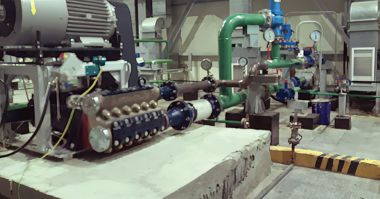A key part of a modern plant’s safety and asset monitoring system is gas detection. The majority of plants have a permanent gas detection setup to alert operators when there are critical issues. When a permanent solution isn’t needed, temporary systems can help.
What isn’t thought about as often is areas that may not need gas detection all the time, or that may need additional gas detection at certain critical junctures for extended periods and potentially at a moments notice. In cases like this, you want something portable enough to be placed where you want, but with a long enough battery life to hold up for a potentially extended need.
Below are a few examples of when this might be helpful:
1. Plant shutdown:
During a plant shutdown, work may be done on assets where toxic or combustible gases are present. In this situation, there may not be sufficient gas detection present to ensure the safety of plant personnel in an area that may not usually have operators or maintenance staff present. One option is to have personnel sweep work areas with portable monitors before work begins. However, an alternate approach is to set up a semi-permanent gas detection system around the perimeter of the area that can alert to potential dangers before or during work without requiring the deployment of personnel.
2. Monitoring a known leak:
If there is a known leak source at your plant that cannot be repaired immediately, temporary gas detection can provide constant monitoring of the situation to ensure that the leak is not getting worse while also providing critical information on the safety of the area. This can be valuable information to have as a plant operator when trying to balance a wide range of challenges with limited personnel.
3. After a natural disaster:
If your plant is struck by a natural disaster, it can wreak havoc on your processes and potentially create unsafe conditions. This is a time when safety is critical and resources are likely stretched. Setting up temporary monitoring around critical assets in the days and weeks after an event can help provide valuable data in the areas that need the most attention, or present the most critical safety challenges.
4. Plant Expansion:
During a plant expansion you may be moving or adding critical infrastructure. If dangerous gases are present during this time and you haven’t had a chance to move or add to your permanent gas detection system, temporary monitoring can help bridge the gap and ensure that workers are safe during potentially chaotic transitions.
Wireless gas detection is being used more and more as an alternative to wired detectors. This is a solution for permanent gas detection in plants where wiring is not feasible, but it also provides a solution for semi-permanent or temporary gas detection. A plant can keep a number of detectors on hand and deploy them strategically to provide monitoring when unpredictable or even predictable needs arise for additional gas detection. In cases like this, it can pay to be prepared to ensure the safety of your people and assets.
United Electric Controls looks forward to hearing what needs you or your plant have for gas detection.
 About the Author:
About the Author:
Kirk Dragsbaek, Inside Sales Manager
Kirk has 10 years of experience in technical sales with a current focus on wireless gas detection.
Email: KDragsbaek@ueonline.com





Comments